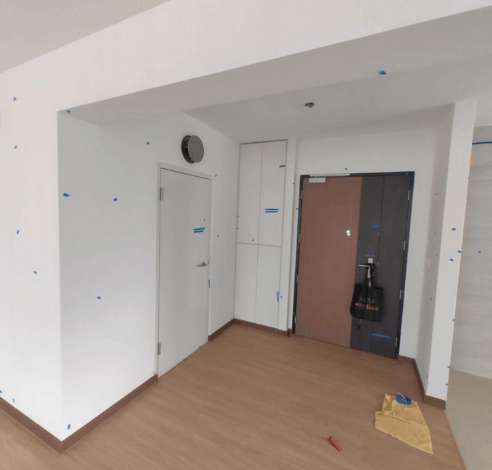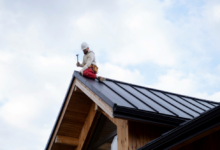Comprehensive Property Protection: Key Areas Covered During A Defects Check

When it comes to property ownership, whether it’s a new development or an older structure, a defects check is a critical process to ensure the property’s safety, functionality, and value.
This detailed inspection focuses on identifying big and small issues that could impact the building’s structural integrity or aesthetic appeal.
A comprehensive defects inspection can help you avoid expensive repairs down the line and offer peace of mind. Below, we explore the key areas covered during a defects inspection, breaking down what inspectors typically look for and why each area matters.
Structural Integrity
Evaluating the structural integrity of the property is a key component of a defects inspection. This involves inspecting the building’s foundation, walls, ceilings, and floors for signs of cracks, uneven surfaces, or shifts that could indicate deeper problems.
Structural defects can range from minor cosmetic cracks to serious foundational issues that may compromise the building’s safety.
Inspectors also check for signs of sagging roofs, uneven flooring, or misaligned doors and windows, which could indicate structural misalignment or poor construction practices.
Waterproofing and Leakage
Waterproofing is crucial for any property, and defects in this area can lead to extensive damage over time. During a defects check, inspectors examine areas prone to water intrusion, such as bathrooms, kitchens, basements, and balconies. Leaks or water seepage can cause mould, mildew, and even structural damage if left unchecked.
Inspectors typically assess whether the waterproofing systems are properly installed and if there are any visible signs of water damage, such as damp spots, discolouration, or peeling paint.
Special attention is given to roofs, window seals, and exterior walls to ensure they are well-protected against rain and humidity.
Plumbing Systems
The plumbing system is another key area covered during a defects check. Inspectors examine pipes, faucets, and drainage systems to ensure they are functioning properly and free from leaks. Faulty plumbing can result in wasted water, increased utility expenses, and potential water damage to the property.
They also check water pressure, the condition of sanitary fixtures, and the proper installation of drainage systems to ensure that everything meets safety and quality standards.
Any plumbing issues, even minor ones, should be addressed promptly to avoid more significant problems later.
Electrical Systems
The electrical system of a property is essential for ensuring both safety and functionality. During a defects check, inspectors thoroughly examine electrical wiring, outlets, circuit breakers, and appliances. Faulty wiring can create significant safety risks, such as the potential for electrical fires.
Inspectors look for exposed wires, malfunctioning switches, or overloaded circuits. They also ensure that the electrical system is compliant with local safety regulations and capable of handling the property’s load requirements.
Even seemingly minor issues, such as flickering lights or loose outlets, are noted and addressed during the inspection.
Doors and Windows
Doors and windows are essential for ensuring a property’s security and maintaining its energy efficiency. During a defects check, inspectors assess whether all steel doors and windows are properly aligned, sealed, and functional. They check for issues such as warped frames, gaps, or difficulty opening and closing.
Poorly installed or damaged doors and windows can lead to air leaks, which reduce energy efficiency and increase heating or cooling costs.
Inspectors also evaluate the quality of locks and handles to ensure that the property is secure against unauthorized access.
Walls, Ceilings, and Finishes
A property’s aesthetic quality is just as important as its functionality. A defects check includes thoroughly assessing walls, ceilings and finishes to identify imperfections such as cracks, dents, uneven paint, or poor plastering work.
These issues might not seem significant, but they can detract from the property’s overall appearance and may also indicate deeper problems.
Inspectors ensure that the finishes meet the expected quality standards and are free from defects that could affect the property’s value.
Floors and Tiling
Flooring and tiling are inspected for cracks, loose tiles, uneven surfaces, or gaps in grouting. These issues are not just cosmetic but can also pose safety hazards, especially in high-traffic areas.
For example, loose tiles in a bathroom can increase the risk of slipping, while uneven flooring can lead to accidents.
During the inspection, the materials and workmanship are evaluated to ensure that they meet quality standards and are durable enough to withstand daily use.
Exterior Areas and Roofing
When it comes to defects checks, a property’s exterior is equally important as its interior. Inspectors evaluate the condition of roofs, gutters, and exterior walls to identify damage or wear and tear.
Roofing defects, such as missing shingles or cracks, can lead to water leaks and structural issues. Gutters are checked to ensure they are free from blockages and capable of directing water away from the property. The exterior walls are inspected for cracks, peeling paint, or other signs of weather-related damage.
Conclusion
A bto defect inspection is essential for any property owner or buyer. A professional defects inspector ensures that the property is safe, functional, and aesthetically appealing by covering key areas.
Addressing defects early not only saves money on future repairs but also preserves the property’s value and livability.
With A1 Inspection, property owners can rest assured that no detail is overlooked and every potential issue is identified and addressed.





